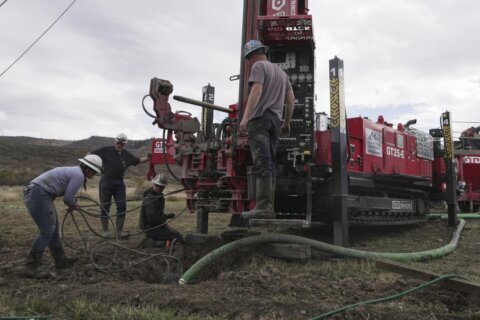As wildfires grow in size, frequency and intensity, officials are looking for new ways to fight back. But there’s also a new focus on the mental and physical health of those who dedicate their lives to fighting the deadly blazes.
One of those people is Aaron Humphrey, who worked as a hotshot superintendent for the U.S. Forest Service. Hotshots work on the edges of fires, scraping the ground bare to prevent the fire from gaining more fuel. After following his father’s footsteps and working 25 seasons with the agency, Humphrey sent a resignation letter to colleagues detailing his need for “professional help” due to his job’s working conditions.
“I just felt angry all the time,” he told CBS News freelance correspondent Brook Silva Braga. “I felt anxious and angry.”
Humphrey isn’t alone. The former firefighter, who worked on response efforts for the massive and deadly Carr Fire in 2018, says mental health challenges are common for those who work in the industry for a long time.
It hasn’t helped that the fires are getting worse. California has seen multiple fires twice the size of the Carr fire, fueled by dry conditions that can be linked back to climate change.
U.S. Forest Service chief Randy Moore says part of the problem was created nearly a century ago by the Forest Service itself, citing a policy established in 1935 that required every fire to be suppressed by 10 a.m. the day after it was first reported.
“What we didn’t realize at the time was the ecological value of fire,” he said. “Now we have an over-dense forest because we were putting all these fires out. What you have is a greater opportunity for catastrophic wildfires.”
There have been some solutions. CALFIRE battalion chief Gus Boston said teams have been intentionally setting fire to areas under specific weather conditions to thin out flammable fuels and improve habitats, otherwise known as prescribed or controlled fires.
But the practice can be dangerous. Earlier this year, officials temporarily paused prescribed burns after an investigation revealed that a controlled fire ignited by the U.S. Forest Service was behind New Mexico’s largest wildfire in history.
That’s not the only problem. After working 17 years with the Forest Service, Mike West also wrote a letter to his colleagues, detailing the difficulty he faced getting treatment for PTSD and the struggles caused by the job’s low pay. Pay starts at just $15 an hour, far below the rates for local agencies like Cal Fire.
“If you’re putting an incredible strain on your family and risking your life, you deserve to support your family without relying on insane amounts of overtime,” West wrote.
In the long-term, said former Forest Service Deputy Director for Fire Chris Schow, America needs “highways, water, delivery systems, electrical distribution that can live with fire on the Western landscape.” But in the meantime, he said, the toll on firefighters keeps getting worse.
“Trying to push that rock up the hill is what these people live for, but it keeps rolling back down over them,” Schow said. “And that gets really hard, really really hard.”
Moore told Congress this spring that the Forest Service was on track to be fully staffed.
That was difficult to believe for hotshot superintendent Scott Burghardt, who says he lost 40% of his crew just this year. Some of his firefighters have even struggled to find housing, with some living in their vehicles, he said.
He forwarded one of the resignation messages he received along to the Forest Service, accompanied by a note with his own frustrations.
“Watching the mass exodus of operational knowledge is one of the saddest evolutions I have witnessed,” he wrote.
The Forest Service said this month that it’s about 80% staffed. Internal documents shared with CBS News showed only half of Forest Service engine companies in California will be fully staffed.
Despite the industry’s challenges, Burghardt says he’ll stay until he retires.
“I want this to succeed,” he said. “I want this to keep going. I want to see folks get the respect that I think they deserve.”







